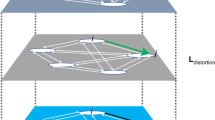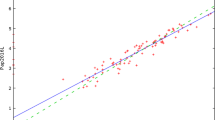Abstract
Although such indicators exhibit only certain aspects of the contribution of science to a country, the number of scientific authors in a given year is plotted for every year between 1971 and 1976, inclusive, and the number of scientific authors divided by the population of the country is also given for those years. The number of scientific authors is the number of scientists who published at least one article in a journal in that given year. The data were taken from a survey which, although it covers only about 4000 scientific journals, includes a large fraction of all articles published.
The results are given in 43 graphs, the first 17 of which show the number of authors and the second 16 the authors per capita. The graphs are divided according to geographical areas: Latin America, Africa, the Middle East, and Asia, and within each region countries with roughly comparable output or output per capita are grouped together.
The last ten graphs show the growth rates of authors and of authors per capita, compared to the 1971 values, for groups of countries aggregated according to various parameters with which correlation is being investigated. Continent, size of population literacy rate about 25 years before, the percentage of gross national product spent on military expenditures, and colonial past.
Similar content being viewed by others
Explore related subjects
Discover the latest articles and news from researchers in related subjects, suggested using machine learning.References
Who Is Publishing In Science, Institute of Scientific Information, Vols 1972–1977 inclusive.
United Nations Statistical Yearbook, United Nations, Vol. 1977.
Private communications with Isabel Wertheimer, Institute of Scientific Information, Philadelphia, PA.
Data for literacy rates were taken from the U.N. Statistical Yearbook, 1957. United Nations, New York.
Data for the percentage military expenditure were taken fromMilitary Balance, 1974 and 1977, International Institute for Strategic Studies, London, England. We are indebted to Mr. S. R.Elliot for providing us with the data.
The colonial backgrounds were determined on the basis, of The Times Atlas&Gazetteer of the World, 1922, The Times, London.
See for example D. de S. PRICE, Measuring the Size of Science.,Proc. Israeli Acad. of Sci. and Human, IV-6 (1969); I. SPIEGEL-RÖSING,Sci. Stud. 2 (1972) 337; H. INHABER, K. PRZEDNOWEK, Geoforum 19 (1974) 45; H. INHABER,Geoforum 6 (1975) 231; J. D. FRAME, F. NARIN, M. P. CARPENTER,Soc. Stud. of Sci. 7 (1977) 501; J. VLACHY,Czech. Journ. of Phys B29 (1979) 455; J. D. FRAME,Soc. Stud. of Sci. 9 (1979) 233.
Author information
Authors and Affiliations
Additional information
This article was first suggested by and submitted toInterciencia, but upon its completion Interciencia was hesitant to publish it because of the coverage by the ISI compilations of Latin American scientific journals. It was felt by Interciencia that the coverage was so skimpy as to fail to do adequate justice to the scientific output of Latin American countries. By implication, the same may be said about the coverage of other parts of the “Third World”.
On the one hand, as explained in the article, this criticism does not invalidate the findings of this article if they are formulated in a sufficiently careful language. On the other hand, the criticism has merit since there is a great need for a much more complete coverage of the scientific publications, authors publications, and citations in the Third World. For reasons which are quite legitimate in their own right, it is unlikely that an organization like ISI can undertake a coverage of the thousands of journals published in the Third World. I have therefore been suggesting for some time to various appropriate people in the developing countries that these countries, singly or in groups, initiate their own computerized compilation of journals, authors, publications and perhaps even citations. Such a program would be of great value not only in an international context, but also in terms of national and regional science policies, in terms of studies in the science of science of efforts in the developing countries, in terms of evaluative, and assessing efforts in those countries, etc. I hope that this article and the reaction it may produce will accelerate the beginning of such an effort.
Rights and permissions
About this article
Cite this article
Blickenstaff, J., Moravcsik, M.J. Scientific output in the third world. Scientometrics 4, 135–169 (1982). https://doi.org/10.1007/BF02018451
Received:
Revised:
Issue Date:
DOI: https://doi.org/10.1007/BF02018451




